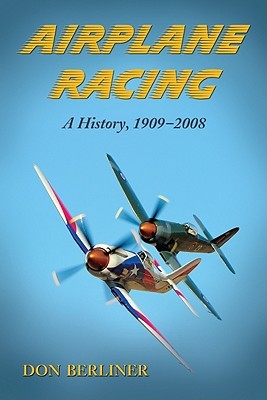But the dreams of a practical, safe
racing class of small planes powered by inexpensive and reliable engines
wouldn't go away ... but alas, they remained nothing more thin dreams
until the autumn of 1939 when, on September 24th, the New York Times
reported that the National Aeronautics Association Technical Committee had
an interest in midget racers. It was not until the immediate post-war
years however, that any serious planning for the development of the class
was accomplished.
In October 1946 the Professional Race
Pilots Association completed work on specifications for the 190 cubic inch
engine displacement class, and that organization formally accepted the
specifications on December 3rd. Fifteen days later the NAA Contest Board
approved the PRPA specifications and the new class was born.
On January 12, 1947 the new class was
given a significant boost when the Goodyear Aircraft, Corporation
announced sponsorship of three annual trophy races in the new class with
$25,000 purses, with the first to be held at Cleveland the following
September.
By midsummer a number of the new breed
of aircraft were under construction and the first one flew on July 4th.
Twenty-one of these new midget racers were formally entered in that first
Goodyear trophy race, fifteen actually appeared at Cleveland and twelve
completed qualifying tests and time trials. That first race meet was a
notable success with eight exciting and accident free races over a three
day period.... setting the tone for the years to follow.
The specifications which established
among their rigid compliance requirements a maximum engine size of 190
cubic inch displacement worked well for a number of years. The Continental
four cylinder air cooled engine of 188 cubic inches displacement was the
one dominant engine of the day with a reputation for reliability in the
American small plane market. It was rated at 85 horsepower, was economical
and was readily available ... and thus became the standard powerplant of
this racing class.
However with the passage of years, the
Continental C-85 engine went out of production and with their
ever-limiting availability by the mid-'60's, it became necessary to amend
the specifications for the class and permit use of the newer and slightly
larger piston displacement engines of 200 cubic inches. This was done on
January 1, 1968, and the 190 Cubic Inch Class officially became the
Formula One Class. It is interesting to note that this has been the only
significant change to the specifications for the class in its 50 year
history.
Performance increases which had been
steady but un-dramatic now accelerated significantly, though not solely as
a result of the slightly larger engines and the new and improved aircraft
designs and materials for their construction. New race courses were
generally larger and uniformly of six pylon configuration which made turns
at the pylons less stressful on both pilot and plane...and less hazardous.
A six-pylon race course was nothing new.
One of such configuration had been first used at Istres, France
successfully in 1923. At that first Goodyear meet in Cleveland in 1947,
the NAA Contest Board originally approved a three pylon course with
unusually sharp 60' turns at all three pylons. But at the insistence of
PRPA president, veteran racer Art Chester, who adamantly sought safer
course layouts, it was redesigned, but only to a four pylon layout.
Ironically, a six pylon course was not to be used until May 1949 at
Newhall, California as a result of the tragic deaths of Chester and
another pilot on a four pylon course at San Diego two weeks earlier.
Formula One racing became something of
an all-American spectator sport. Races were held in both large and small
venues from coast to coast and interest among aviation enthusiasts was
high. But it remained uniquely an American sport until the first of the
European races under Formula One rules was flown by the British at Jurby,
Isle of Man in 1970, and to date the Europeans (primarily the British and
the French) have flown 126 race meets in 5 countries; and in 1976 the
French held the first truly international event of significance, the 1976
International Grand Prix at Le Castellet, France with planes and pilots
from three nations participating. Subsequently, British crews and planes
competed in U. S. races in 1983 and 1987.
Although raceplane performance improved
remarkably over the sport's first 21 years, it was not totally unexpected
given the more favourable factors that emerged with the passage of time.
The average speed of the ten fastest qualifiers rose 30% between the first
race meet and the last meet with the 190 cubic inch engines twenty years
later. In the next twenty years, that figure had risen to 57% with the
amended specifications, improved aircraft designs which took advantage of
improved technology, and larger and better configured race courses. And
even more dramatic increases in performance have been recorded in the past
few years. At the latest meet in 1996, the top qualifying speed was over
100 miles per hour faster than that of the top qualifier at that
inaugural race in 1947 ... and with an engine with but 5% greater
displacement.
In the fifty year lifespan of this
racing class, over 200 aircraft have raced in 782 U. S. races in 177 race
meets (through the 1996 racing season) from coast to coast and in Mexico
and Canada, and the number of existing and under-construction planes is at
an all-time high. The current group of Formula One racing pilots is more
experienced than ever before with most of them flying regularly in other
segments of the aviation world.. . as airline pilots, corporate pilots,
charter pilots,. FAA check pilots, military pilots, agriculture pilots and
instructors. Four aging veterans in their mid-'70's, one of whom is
commencing his 50th year of racing in this class. . a remarkable
achievement not likely to be equalled.







